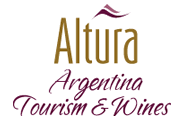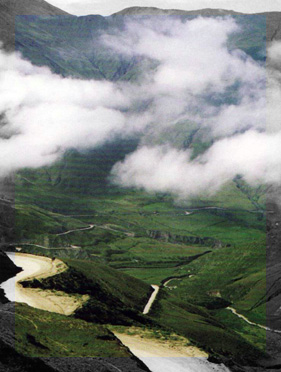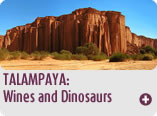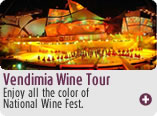
Argentina wine regions
Catamarca Valleys and Famatina Valleys (Catamarca and La Rioja provinces)
Catamarca Valleys
Catamarca Valleys are fertile lands with an area of 101,000 square kilometers wide.
Nowadays are being rediscovered by entrepreneurs of the winemaking world, although this region has been dedicated traditionally to vineyards cultivation.
San Fernando Del Valle de Catamarca is a tourism and commercial centre as well as an active cultural centre due to its university, institutions and museums. In these places there are paleontological pieces and archeological remains as a result of the cultural cross phenomenon between the aboriginal culture and colonial past in these lands. Different aspects of clay, metal and stone that are exhibited in the museums illustrate in an artistic and documentary manner the myths and customs developed through these years and show the history of each region which is a cultural heritage. Among the most important museums there is the Archivo and Museo Histórico and the Museo Calchaqui.
Famatina Valleys
The region is located at 20°10’ South latitude with altitudes ranging from 935 m. to 1,170 meters above sea level, in La Rioja Province. It has very low rainfall (130 mm per year) and moderate winds. The average temperature is 18º C.
There are 7,000 hectares vineyards, most of them with Torrontés Riojano matured by the generous sun of these valleys to express its deep floral and fruity aromas. Besides, in recent years, other red varieties have been grown, especially Syrah. The most important terroirs are Chilecito, Nonogasta and Anguinan with very sandy soils.
La Rioja viticulture is carried out in small irrigated valleys in the west of the province, between Velasco and Famatina hills. Chilecito Department has the largest part of the vineyard area (over 70%).

The geography of the place offers great opportunities to appreciate the contrasts of its spectacular beauty; from the peaks, in the vast heights of the Andean mountain range until the valleys where beauty and diversity were blended so that man could obtain a rich land for agriculture. Mountains and canyons, among them Ojos del Salado (6864 meters) and Monte Pisis (6882 meters) are a typical postcard of the relief of this zone.
|
Viticulture and Winemaking
Province of Catamarca, due to the differences in the relief, is divided into two important climatic regions: western valleys and eastern valleys.
In the west we can find the viticulture zones, which receive scarce rainfall that rarely reach 200 mm. per year and have a lower temperature range than the rest of this sub-region. This climate, related to the great thermal amplitude, determines an ideal zone for the growing of high altitude vineyards. Most wineries are located here and 70 °/o of the vineyards. The main areas are Tinogasta (more than 70 % of the total production), Fiambalá, Belén and Capayán. The best known vine stocks are Syrah, Cabernet Sauvignon, Malbec, Chardonnay and Cherry.
With a surface of almost 90,000 square kilometers, La Rioja with its mountains and hills shines by itself. Its orography shows visitors an exclusive combination of mountains, where the mounts Bonete and El Potro stand out, and also plains, carefully kept by man.
Though landscapes impress tourists, this province has part of the history of Argentina embedded in its roots, La Rioja is the cradle of heroes and federal leaders such as Facundo Quiroga, “Chacho” Peñaloza, and Joaquín V. Gonzalez, which give those who know the origins of this land a proud air of wisdom.
Surrounded by Sierra de Velasco, the capital city of La Rioja was founded in May 1591 by Juan Ramírez de Velasco. At present, we can see that its architecture reflects the mixture of old and modern styles with narrow streets, low buildings and a layout that assembles the Town hall around the Central Square.
|
The weather has a history of long droughts, typical of the arid mountainous areas. The agriculture and cattle development depends on water availability, supplied by two main dams: Quebrada de La Rioja and Chilecito, which are their vital natural resources.
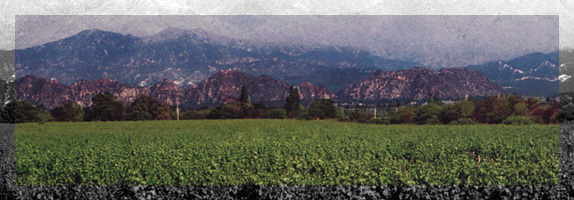
Fuerte Quemado, Las Mojarras, Aldahaualá, Famabalasto, Loma Rica de Shiquimi, which are the focus of attention for archeological and paleontological research because there are pre-columbian ruins, ores and pucaras. This area is also known for its viticulture development at 2,000 meters of altitude.
Tinogasta is the most important place in the west of Catamarca. It is 300 kilometers far from the capital city, in Abarcan River Valley. Its streams, which flow from the Andean range slopes, provide the necessary water for vineyards, fruit trees and olive trees that grow there.
There is an important cultural and landscape heritage among which San Pedro Church stands out, in Fiambalá, built in 1712 and which is one of the oldest buildings in the region.
Fiambalá is an important viticulture zone, inside Tinogasta valley, where high quality wines are developed in 200 hectares with altitudes from 1,200 meters to 1,750 meters.
Part of the grapes production is consumed fresh. The rest is dedicated to winemaking. It is expected that there will be new varieties in the future and together with the vineyards that have been recovered and promising ventures, the wine production of Catamarca will reach levels of great quality.
Viticulture and Winemaking
With 8,000 hectares implanted with vineyards, La Rioja has had a vast growth in the last years. Surrounded by the Macizo de Velasco at the east and the Nevado de Famatina at the west, Famatina Valleys are the best place to grow vineyards in this province. More than 1,100 meters above sea level is the average altitude in the zone, which provides grapes with a high level of sugar and poor acidity. The varietals that are mainly grown are: Torrontés Sanjuanino, Torrontés Riojano and Moscatel from Alejandría. These aromatic varieties are benefited from the high luminosity, the thermal amplitude, which is about 15 Cº between day and night, and the low rainfall.
![]()
![]()
